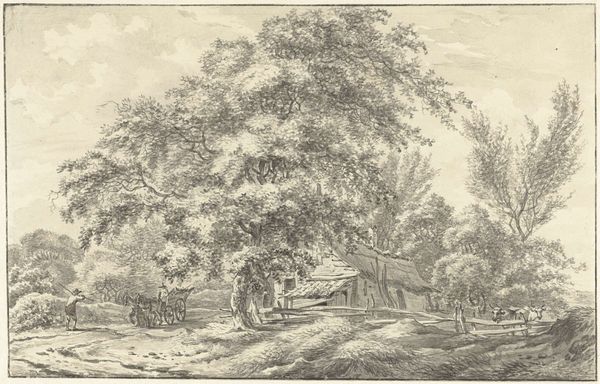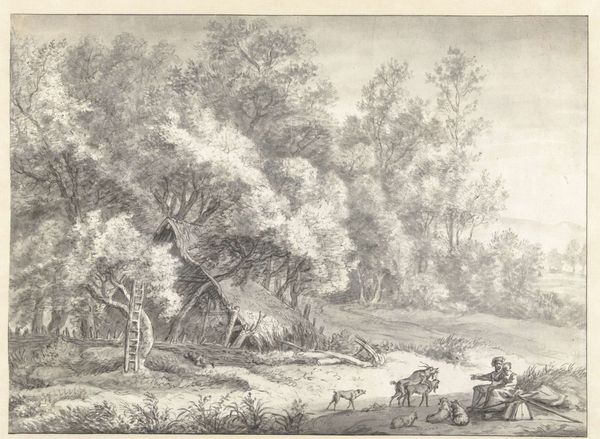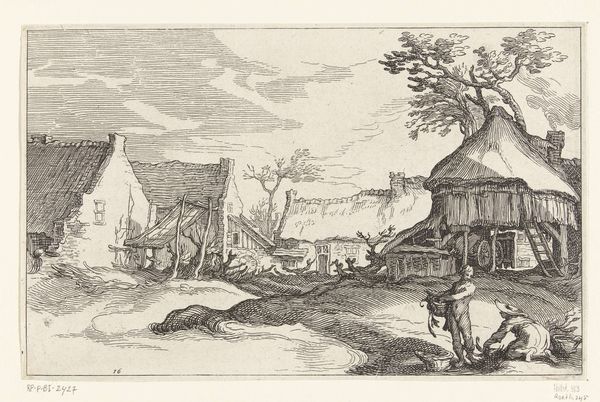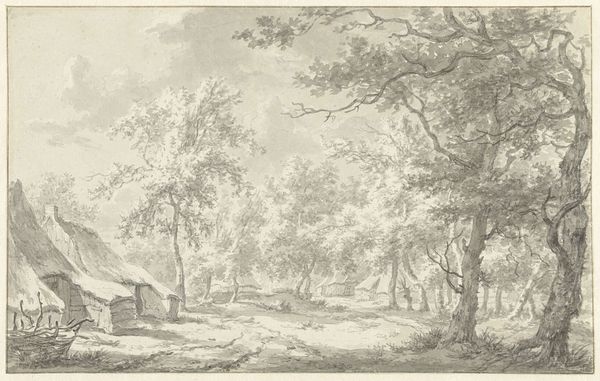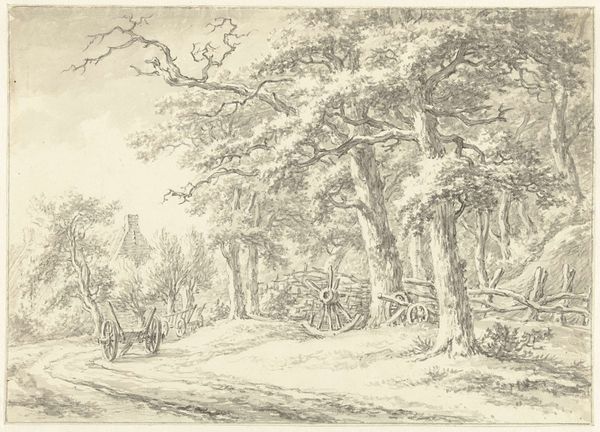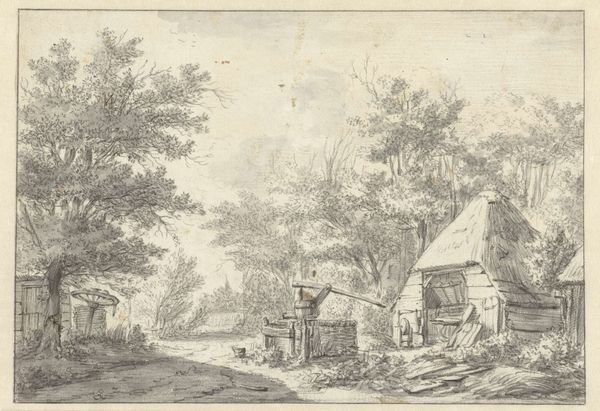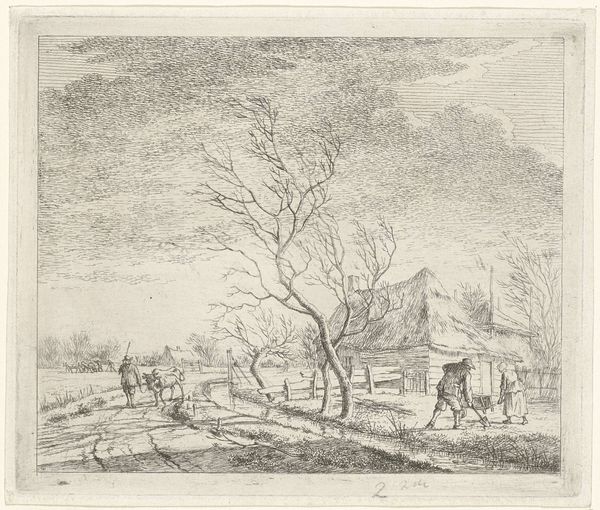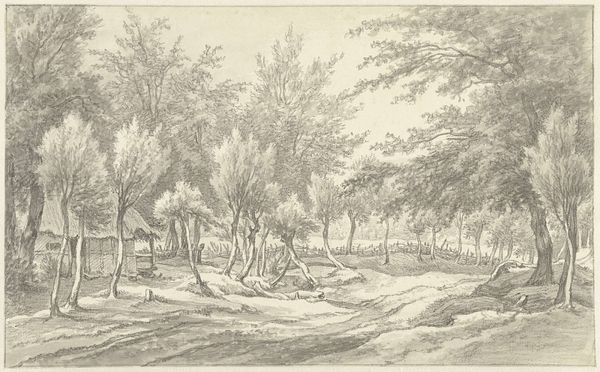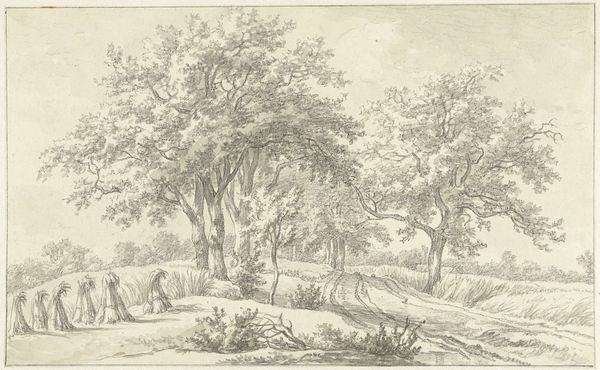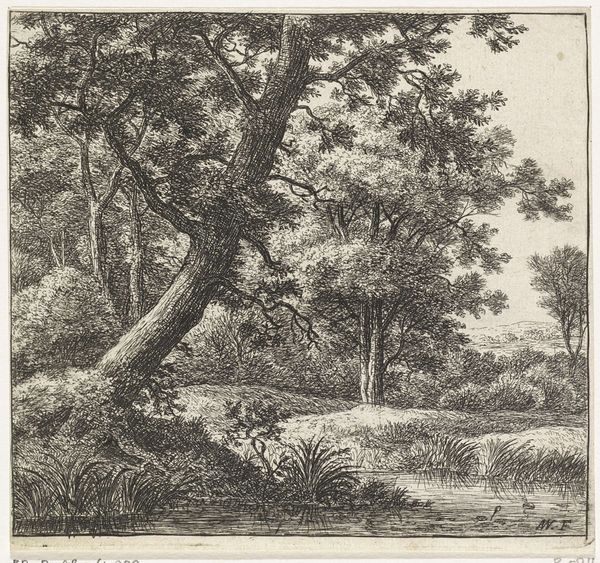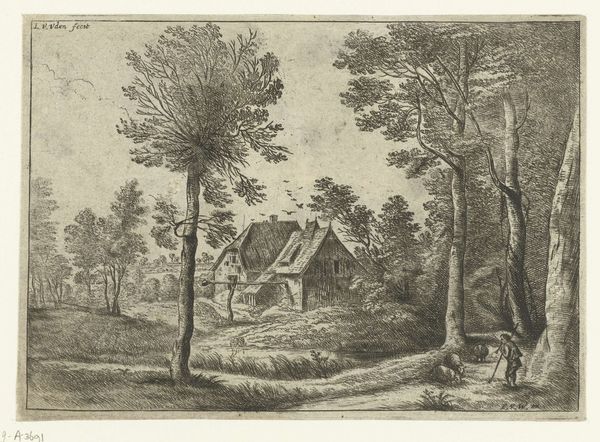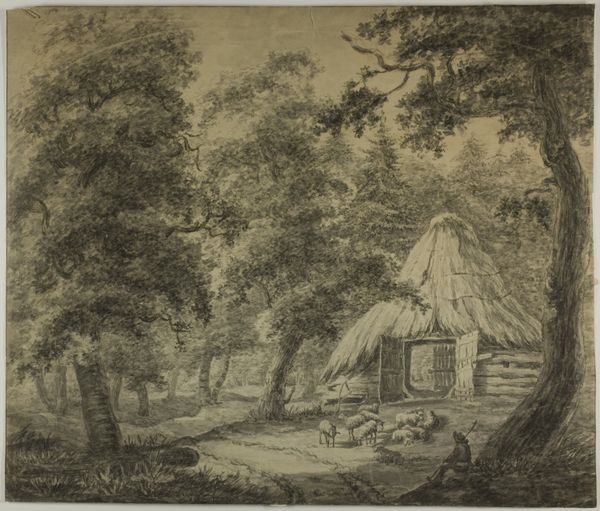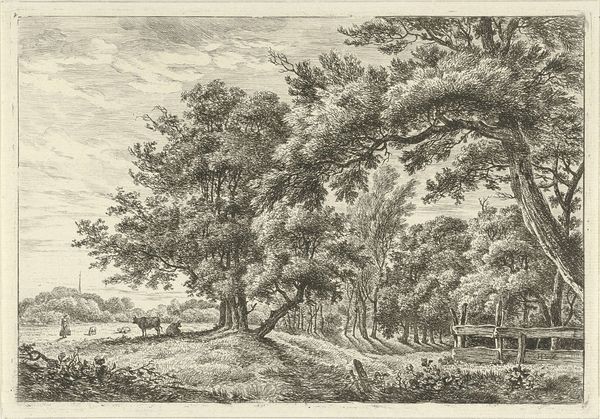
drawing, pencil
#
drawing
#
pen drawing
#
dutch-golden-age
#
landscape
#
forest
#
pencil
#
realism
Dimensions: height 195 mm, width 315 mm
Copyright: Rijks Museum: Open Domain
Curator: Welcome to the Rijksmuseum. Today, we are looking at "Herdershut tussen bomen," a drawing attributed to Anthonie Waterloo, dating back to sometime between 1619 and 1690. Editor: It's surprisingly gentle, isn’t it? The soft gradations of grey in this landscape give it a wistful, almost melancholic air. There's something quite affecting in the composition, even with its slightly ruined aesthetic. Curator: Indeed. Waterloo's rendering of the scene relies on subtle modulations in pencil and pen. We see his dedication to the tradition of Dutch Golden Age landscape, one that increasingly emphasized the relationship between humanity and nature. Observe how the detailed strokes render the decaying shelter with stark realism, positioning it squarely in its environmental niche. Editor: Yes, the way he captures the textures of the wood, stone, and foliage is impressive. Considering its social and cultural context, what did landscapes like this mean to people back then? Was it simply picturesque? Curator: These images offered far more than superficial charm. They were a conscious celebration of the Dutch countryside and, by extension, Dutch identity, especially given their context during and after the Eighty Years' War. Artists like Waterloo gave material form to an emerging sense of national pride. Editor: So this unassuming sketch becomes part of a visual language of nation-building? The crumbling shelter suggests a humbleness and rustic simplicity that might resonate with certain political ideologies... Curator: Exactly. Notice too, the visual weight given to the surrounding trees; their imposing size overshadows the architectural form, suggesting an indifference towards humanity's efforts against nature's overwhelming presence. In artistic language, one could claim this natural dominion as semiotic. Editor: It strikes me that the absence of human figures is equally significant. We’re left contemplating the built structure as if observing what's left after its abandonment. What lingers is a strong meditation of time. Curator: An acute observation. Perhaps Waterloo's genius lies in presenting something simultaneously ordinary and deeply contemplative. Editor: It's quite something how a seemingly simple drawing like this can reveal such layers of meaning. Thanks for sharing your insights! Curator: My pleasure. Hopefully this analysis adds further appreciation to the drawing’s visual and conceptual qualities.
Comments
No comments
Be the first to comment and join the conversation on the ultimate creative platform.
